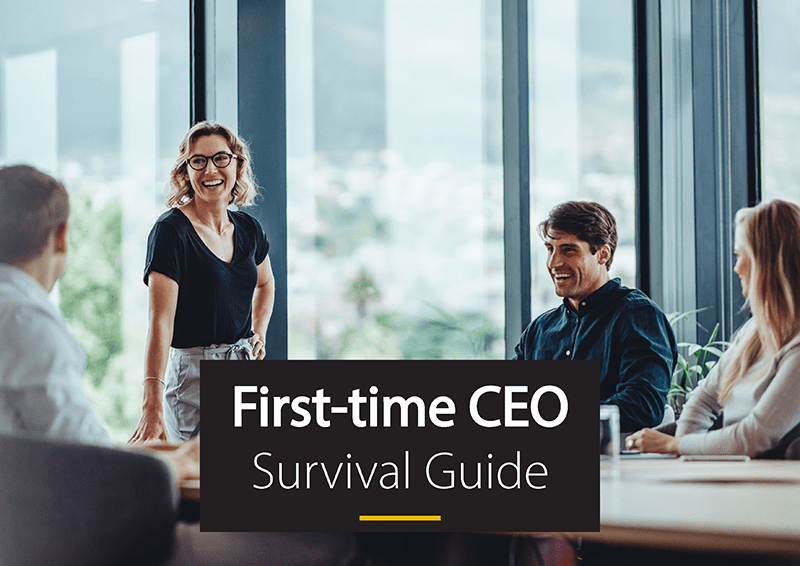You are here: Home / Insights / Business Operations / 3 ways leaders can start unlocking the benefits of AI

3 ways leaders can start unlocking the benefits of AI

Author: Joe Galvin – Chief Research Officer for Vistage Worldwide
After decades of hype and hysteria, artificial intelligence is finally ready for primetime.
To date, AI has largely been reserved for the largest companies. But now, with the advent of generative pre-trained AI like ChatGPT, individuals are finally beginning to unlock AI’s true potential.
As was once the case with Excel and PowerPoint, AI competency will soon become a standard requirement. Until then, individual adoption will serve as the most effective means for small and midsize businesses to reap the benefits of AI.
Vistage’s data shows just 20% of small and midsize businesses are currently using AI to some degree. Another 23% report that while they are not using it in the field, they are testing it behind the scenes. Meanwhile, 33 percent are not using it at all; 1% have even mandated their employees against using it whatsoever.
However, employees are already harnessing the performance and productivity gains of AI at a much more rapid pace. Recent research reveals that 85% of workers have already dabbled with AI platforms like ChatGPT. Still, an overwhelming 69% of employees are afraid to tell their bosses they’ve tried it.
It is critical that employers not only eliminate this uncertainty surrounding AI but also embrace its potential to improve business. AI should not be seen as a threat, but instead, as an opportunity to enhance and augment the workforce, if leveraged correctly.
Organisations that quickly recognise the value of AI and encourage employee adoption stand to gain a competitive edge over competitors. Here are 3 immediate steps leaders can take to ensure they are on the cutting edge of AI:
1. Audit
Leaders must first look within their organisation to identify the early adopters of AI. Discovery calls and meetings should then follow, to understand how staff are already using AI and what the best practices have emerged along the way.
Currently, the most standard use case for AI is research and idea generation; mastery requires an understanding of the most effective search terms and some degree of literacy when reviewing responses, as data is still often outdated or inaccurate. At this stage in AI’s infancy, it should be seen as a starting point, versus a final destination or final product.
2. Uplevel
AI is actively being integrated into popular workplace apps and collaboration tools, such as Zoom, Salesforce and Microsoft, typically to improve individual productivity.
It can do everything from instantaneously synthesizing and summarising research to taking notes on employees’ behalf to reorganising calendars to create efficiencies to streamlining processes between departments.
By focusing on upgrading and training with software and other applications that are already in place, leaders can reduce potential risks while also realising benefits in a meaningful way.
3. Instill a framework
Once leaders have a clear understanding of who is already using AI in what ways, they can then begin to define and standardise their use as an organisation.
Training is mission-critical. Not only will it provide an immediate productivity boost across the organisation, but it will ensure safe and secure use — cybersecurity remains one of the biggest threats to business. If left unchecked, AI can open the door to even more security issues.
Leaders who try to ignore AI increase the likelihood of employees going rogue and using it in ways that compromise the organisation and its data.
Plus, offering AI training is an attractive recruiting tool, especially for the rising class of Millennials and Gen Z workers who expect their organisation to prioritise technology.
Summary
There’s no denying AI is here to stay. While organisations are still exploring this new frontier, leaders are presented with a unique moment in time to get in front of its inevitable widespread adoption.
Those who succeed at identifying how AI is being used by employees, implementing strong guidelines for individual use and providing employee training stand to accelerate their organisation’s trajectory into the future.
However, those who remain fearful of AI run the risk of falling behind or facing the potential blowback from employees who use it without direction or standards.
This is very much an evolution, and as ITR Economics President Alan Beaulieu says, ‘If you don’t like change, you’re going to hate extinction.’
This story first appeared in INC and featured on the Vistage Research Centre.

Unlock your potential as a first-time CEO with our expert guide
Delve into the six primary areas of focus that can help you gain a clear understanding of your new role and accelerate your leadership development.



